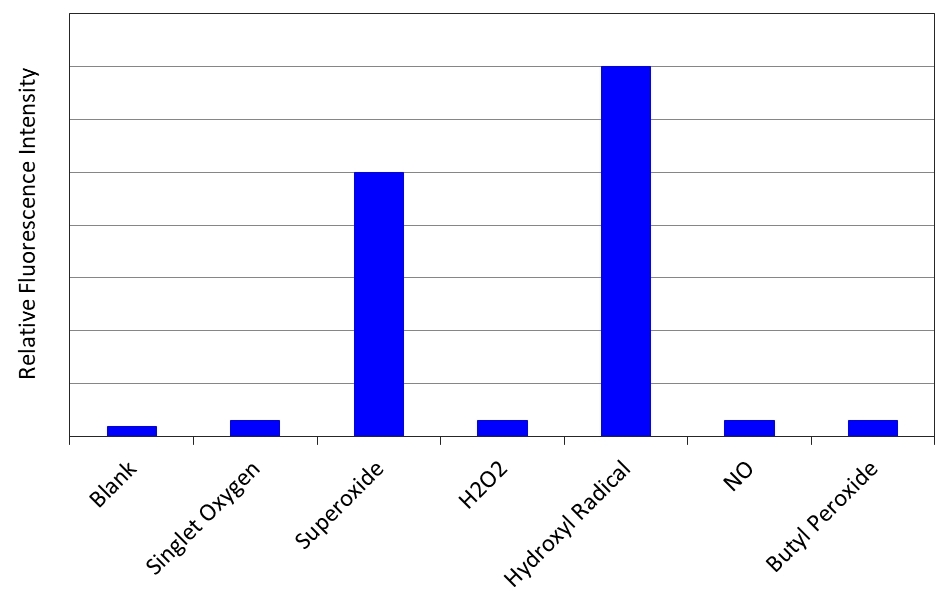ROS Brite™ 700
Optimized for in Vivo Imaging
Reactive oxygen species (ROS) are chemically reactive molecules containing oxygen. Examples include superoxide, hydroxyl radical, singlet oxygen and peroxides. ROS is highly reactive due to the presence of unpaired valence shell electrons. ROS forms as a natural byproduct of the normal metabolism of oxygen and have important roles in cell signaling and homeostasis. However, during times of environmental stress (e.g., UV or heat exposure), ROS levels can increase dramatically. This may result in significant damage to cell structures. Cumulatively, this is known as oxidative stress. ROS are also generated by exogenous sources such as ionizing radiation. Under conditions of oxidative stress, ROS production is dramatically increased, resulting in subsequent alteration of membrane lipids, proteins, and nucleic acids. Oxidative damage of these biomolecules is associated with aging as well as with a variety of pathological events, including atherosclerosis, carcinogenesis, ischemic reperfusion injury, and neurodegenerative disorders. ROS Brite™ 700 reagent is a new fluorogenic probe to measure oxidative stress in small animals. The cell-impermeant ROS Brite™ 700 reagent is a water-soluble nonfluorescent and produces bright near-infrared fluorescence upon ROS oxidation. The resulting fluorescence can be measured using in vivo fluorescence imaging. For cell-based ROS detection, please use our cell-permemeant ROS Brite™ 570, 670 and 780 reagents.


| Catalog | Size | Price | Quantity |
|---|---|---|---|
| 16004 | 1 mg | Price |
Physical properties
| Molecular weight | 1295.14 |
| Solvent | DMSO |
Spectral properties
| Excitation (nm) | 682 |
| Emission (nm) | 701 |
Storage, safety and handling
| H-phrase | H303, H313, H333 |
| Hazard symbol | XN |
| Intended use | Research Use Only (RUO) |
| R-phrase | R20, R21, R22 |
| Storage | Freeze (< -15 °C); Minimize light exposure |
| UNSPSC | 12352200 |
Documents
Contact us
| Telephone | |
| Fax | |
| sales@aatbio.com | |
| International | See distributors |
| Bulk request | Inquire |
| Custom size | Inquire |
| Technical Support | Contact us |
| Request quotation | Request |
| Purchase order | Send to sales@aatbio.com |
| Shipping | Standard overnight for United States, inquire for international |
Page updated on December 26, 2025

